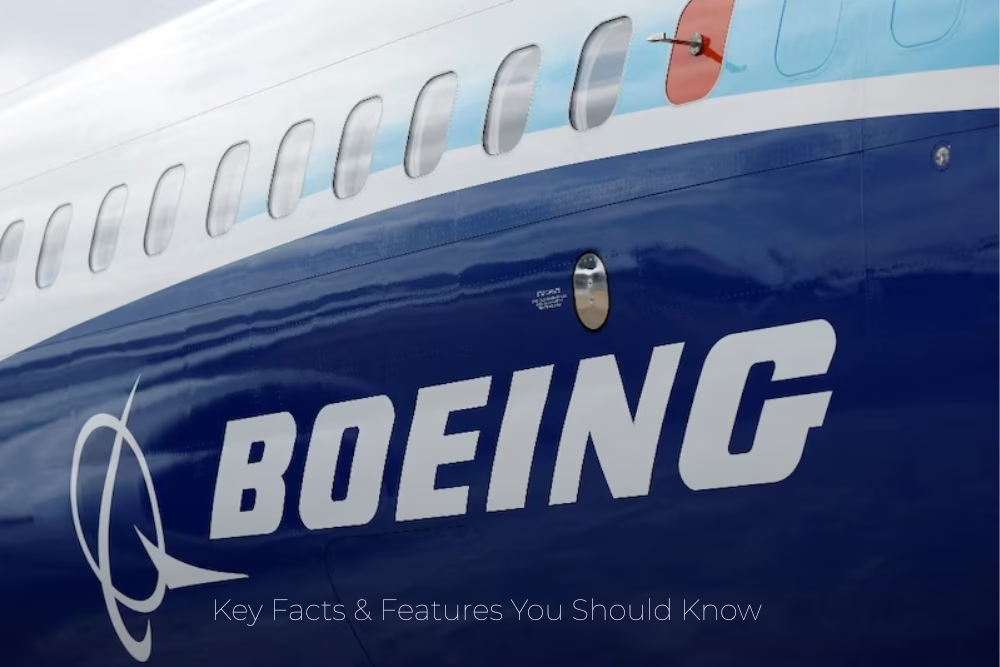The Boeing 787-8 Dreamliner represents a significant advancement in commercial aviation technology. Designed for long-distance travel with greater fuel efficiency, improved passenger comfort, and advanced build materials, it has established itself as a mainstay in international airline operations. If you’re an aviation enthusiast, a frequent flyer, or just curious about what makes this aircraft special, this blog gives everything you need to know about the Boeing 787-8.
An Introduction to the Dreamliner Family
The Boeing 787 Dreamliner is a family of wide-body aircraft introduced by Boeing to replace older models like the 767. The first variant, the 787-8, entered commercial service in 2011. It was followed by the larger 787-9 and 787-10 models. The 787-8 is the smallest of the three but set the stage for what is now considered one of the most efficient and passenger-friendly aircraft in the world.
Why Airlines Love the 787-8
1. Fuel Efficiency
Its lightweight composite structure (over 50% composite materials) drastically reduces fuel burn by up to 20% compared to older models. This means cost savings and lower emissions, a win-win for both airlines and the environment.
2. Operational Flexibility
With its long range and moderate size, the 787-8 is perfect for opening new long-distance routes that wouldn’t be possible with larger aircraft.
3. Lower Maintenance Costs
Advanced materials mean less pollution and exhaustion, which reduces maintenance downtime and costs.
Global Reach and Operators
As of 2025, the 787-8 has been delivered to numerous airlines across the globe, including:
- Air India
- Qatar Airways
- British Airways
- American Airlines
- ANA (All Nippon Airways)
- United Airlines
- Ethiopian Airlines
This aircraft is frequently seen on long-haul routes between North America, Europe, Asia, and the Middle East, serving as a backbone of many international fleets.
Composite Innovation at the Core
One of the standout features of the Boeing 787-8 Dreamliner is its pioneering use of composite materials. Roughly half of the aircraft’s main structure, including its wings, is made from advanced composite materials. This transition away from conventional aluminum construction significantly reduces the aircraft’s overall weight, leading to fuel efficiency and reduced operational costs for airlines.
Rather than being created from multiple aluminum panels, the Dreamliner’s aircraft body is built using large, one-piece composite barrel sections. This design not only reduces the number of buckles required but also strengthens the aircraft’s structural integrity. In terms of size, the 787-8 measures approximately 57 meters (186 feet) in length, has a wingspan of 60 meters (197 feet), and stands about 17 meters (56 feet) tall.
Engine Power and Performance Capabilities
Equipped with two high-bypass turbofan engines. Either the General Electric GEnx or Rolls-Royce Trent 1000, the 787-8 delivers impressive performance. These engines generate between 53,000 and 75,000 pounds of engine power and play a major role in the Dreamliner’s roughly 20% increase in fuel efficiency compared to older wide-body aircraft like the Boeing 767.
The Dreamliner moves comfortably at Mach 0.85 (approximately 903 km/h or 488 knots) and is built to handle a maximum takeoff weight of around 227,930 kilograms (502,500 pounds). With a range extending up to 7,305 nautical miles (13,530 kilometres), it is capable of linking faraway international destinations without layovers, making it an ideal choice for long-distance travel.
Ongoing Safety Evaluations and Compliance Concerns
Even though it has an advanced design and technological strengths, the Boeing 787-8 has not been without controversy. Since 2019, Boeing has faced increasing criticism over manufacturing quality, particularly at its North Charleston, South Carolina.
Reports highlighted a range of assembly issues such as loose passenger seats, improperly installed components, insufficiently tightened buckles, and unsecured fuel-line clamps. These issues outlined strong criticism from operators, with Dutch airline KLM branding the manufacturing quality as “far below acceptable standards.”
In addition to domestic quality concerns, Boeing’s supply chain also came under international investigation. Italian prosecutors initiated a criminal investigation into two suppliers accused of delivering defective titanium and aluminum materials used in the aircraft’s production. These allegations raised red flags about the effectiveness of Boeing’s quality assurance processes and raised concerns about the structural reliability of the Dreamliner.
Key points of the Boeing 787-8 Dreamliner, which stand as a modern sensation in aviation. From its efficient fuel usage and eco-friendly design to its passenger-focused features, it has been reshaped for long-distance flights. While it’s not without its share of controversies and challenges, the aircraft continues to be a turning point for the global airline industry.
As aviation continues to grow, the 787-8 stands as proof of advanced innovation, passenger comfort, and visionary engineering. If you’re admiring its graceful takeoff or experiencing its roomy cabin firsthand, the Dreamliner truly delivers its commitment.



